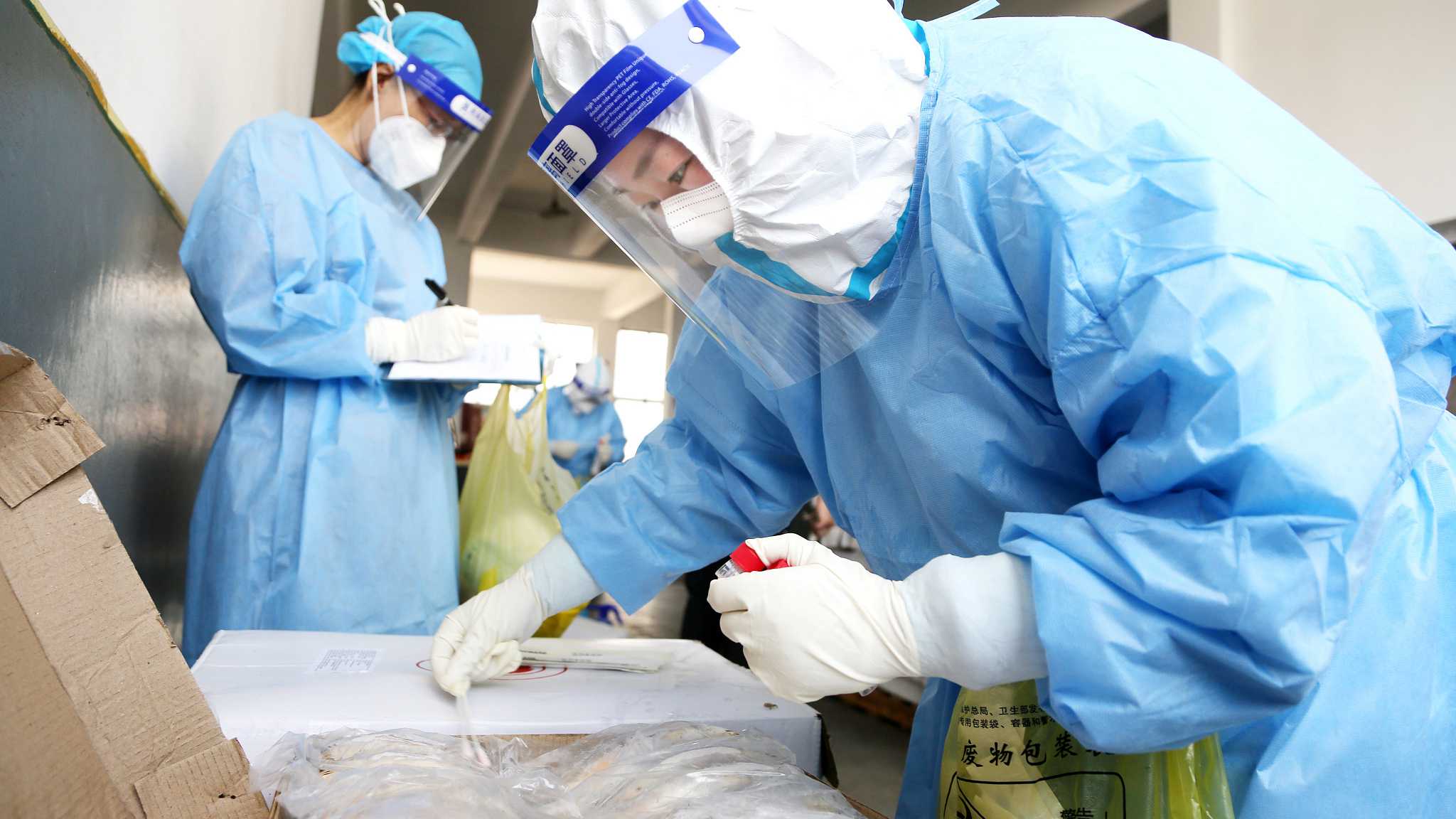
Nucleic acid testing of samples of imported fish in a cold storage warehouse, Lianyungang City, Jiangsu Province, China, August 11, 2021. /CFP
Nucleic acid testing of samples of imported fish in a cold storage warehouse, Lianyungang City, Jiangsu Province, China, August 11, 2021. /CFP
COVID-19 cases reported in Huanan seafood market in central China's Wuhan City in late 2019 could be attributable to viruses brought via cold-chain logistics, Ma Huilai, an official with the Chinese Center for Disease Control and Prevention (CDC), said on Monday, adding that another two COVID-19 outbreaks that later took place in Beijing and east China's Qingdao City were sparked by cold-chain imports.
The outbreak in Beijing came after 56 consecutive days of zero cases of local transmission of the virus, while the disease resurfaced in Dalian after 111 consecutive days of zero local cases, said Ma.
In order to find out the source of the two cluster outbreaks, special teams were set up at national, provincial and municipal levels to jointly carry out in-depth investigations.
By means of epidemiological investigation and analysis as well as viral nucleic acid and serum antibody detection, possible sources of infection were systematically investigated and the flow direction of imported cold-chain food systematically traced. Molecular epidemiological tracing was carried out at the same time to conduct full genome sequencing analysis of confirmed cases and positive cold-chain products.
"Evidence from multiple investigations confirmed that the virus was imported into China from other countries or regions through cold chain," said Ma.
She added that an investigation into another outbreak in Qingdao last October once again found the source to be cold-chain imports from abroad. Meanwhile, the CDC experts, for the first time, successfully isolated the coronavirus on a package of an imported cold-chain product during the outbreak, which directly proved the transmission of the novel coronavirus through cold chain over long distances.
The conclusion has been repeatedly confirmed in other outbreaks that later happened in the country, said Ma. "Once introduced to special places such as seafood markets or aquatic product processing enterprises, the virus can cause local outbreaks."
"Index cases in recent outbreaks in China have been linked to the cold chain; the virus has been found on packages and products from other countries that supply China with cold-chain products, indicating that it can be carried long distances on cold-chain products," the WHO-China joint report released in March 2021 stated.
Similar cases have also happened outside China.
In the first half of 2020, COVID-19 outbreaks occurred in at least 30 large meat processing plants, slaughterhouses and seafood processing plants in countries around the world.
Ma said such evidences have further suggested that during the COVID-19 pandemic, the virus could be reintroduced into countries and regions via cold-chain products.
It indicates that the virus that caused the COVID-19 outbreak in Huanan seafood market could have been introduced through cold chain, she added.
Chinese experts suggested cold-chain exports should be one of the focuses in the WHO's second phase of the study of COVID-19 origins.
"To further trace origins of the virus, we suggest that the cold chain should be taken as a key clue," said Wang Chen, director of the National Center for Respiratory Medicine.
"Given the circumstances of international trade, with the exchange of people and goods around the world, the items-to-human transmission in the cold-chain environment has made pathogen transmission more complicated, which is particularly worthy of investigation and studies."

